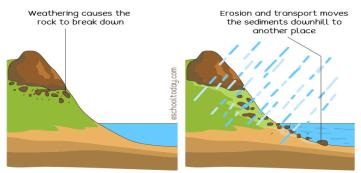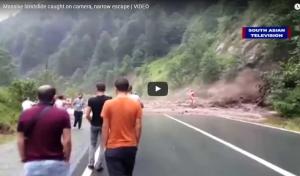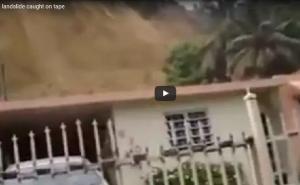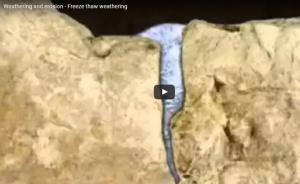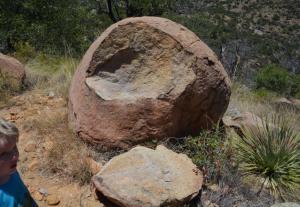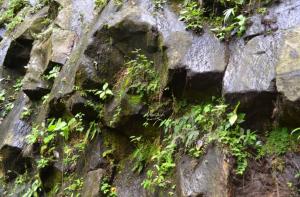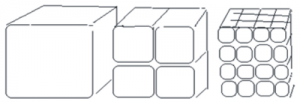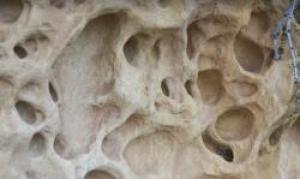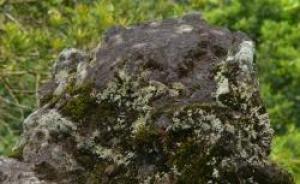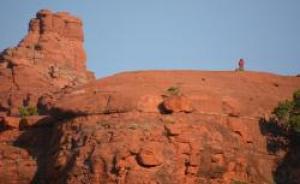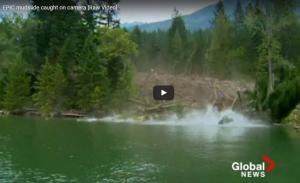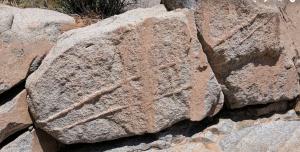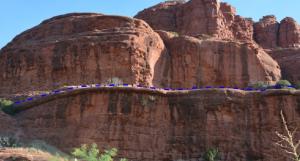Weathering
Extra Credit Opportunity
Before we begin this chapter, we will need copper pennies that are from the year 1981 or older. The reason for this is that before 1982 pennies contained a high percentage of the mineral copper, but after 1982 pennies began to be copper-plated zinc and contained 97.5% zinc, and only 2.5% copper. Zinc is much cheaper than copper.
You can earn some extra credit for up to 5 pennies that are from the years, 1981 or older. We will be designing a lab around these pennies so we need to make sure we get plenty.
Section 1: Types of Weathering
In this section, we will be discussing and learning about weathering processes. Weathering is the process that breaks rocks apart. Weathering is related to erosion as well, but we are going to do a whole section of erosion later on. Erosion is the process of moving and depositing weathered material.
As part of this unit, we are going to be doing a daily YouTube video series called The Daily Dose of Destruction which shows weathering and erosion caught on tape.
Daily Dose of Destruction
There are three main categories of mechanisms for weathering.
- Chemical: Rocks being broken down by chemicals changing the composition of the rock.
- Physical: Rock being broken down by physically bumping into each other. Wind, water, ice.
- Biological: Rock is broken down by processes from plants, animals, fungi, bacteria, etc...
There are many agents of weathering that fit inside the mechanisms for weathering.
- Chemical agents: salt, acid, carbon dioxide, water, etc...
- Physical agents: abrasion, ice, thermal expansion, etc...
- Biological agents: the actual plant or animal
In short, the agent of weathering is the thing that is breaking apart the rock. The mechanism of weather is the process by which the rock is broken apart.
The activity that you are going to do is to find some images that demonstrate that weathering has occurred.
If you are a student at Snowflake, Holbrook or Heber click here. SUSD5 Student version of this Weathering Assignment and Rubric
You can purchase this weathering presentation and rubric at Teacher Pay Teachers for 0.50 cents.
Section 2: Mechanical Weathering
Daily Dose of Destruction
Weathering is the principal action that forms soil. Without weathering, we would never get sedimentary rocks either.
Physical weathering is commonly called mechanical weathering. We will use both terms interchangeably. Physical weathering can be caused by ice. As the ice melts during the day, the water infiltrates cracks, and these cracks can be very tiny, and then later on, usually at night the ice freezes again. As the ice freezes, it expands and causes the rock to crack even wider. The next morning the ice begins to melt, seeps deeper into the crack, freezes at night, and then cracks the rock even more. Over time this action known as ice wedging or frost action can break even the largest of rocks.
|
Mechanical Weathering is also caused by abrasion. Abrasion is the bumping of rock and sediment into each other causing the rock to break apart and even smooth the edges of rock. Glaciers can pluck rock out of the ground and then drag those rocks across other rocks creating glacial grooves. Water pushes sediment downstream where it comes in contact with other sediments, breaking off edges of rock and causing the rock to become smooth. Wind blows sediment into other rock, breaking off pieces, and causing a smoothing of the rock as well. Ice, water, and wind are powerful agents of weathering and cause the landforms, landscapes, and rock formations we see today. Biological weathering is actually another type of physical and chemical weathering. It is considered biological weathering when plants and animals are involved. Roots of plants can find even the smallest space in a rock and then grow. As it grows it expands slowly prying the rock apart. This is called root pry. As animals dig and burrow into the ground they expose the material to the surface where it can be weathered even more. Microbes and lichens that live on a rock, alter the rock's chemical composition which weakens the rock making it easier for other types of weathering to break pieces off or exposing more surface area to the other elements of weathering. |
Weathering by Abrasion |
|
In the next Earth Science lab, you will demonstrate the power that abrasion has on sediment, by completing the rock tumbler lab.
If you are a student at Holbrook, Heber, or Snowflake click here. SUSD5 student version of the abrasion lab.
Purchase this abrasion lab at Teachers Pay Teacher for 0.50 cents.
Now design an experiment that shows the relationship between surface area and weathering rates.
If you are a student at Holbrook, Heber, or Snowflake click here. SUSD5 student version of the Surface Area Physical Weathering Lab
Purchase this weathering lab at Teachers Pay Teachers for 0.50 cents
You should have determined by the end of the lab that as rocks break down and expose more surface area, they weather faster. You can see this in the image below.
Section 3: Chemical Weathering
When rock and minerals are chemically altered becoming weaker rock and sediment, it is called chemical weathering. The hydrogen and oxygen atoms in water react with chemicals and form new compounds. During chemical weathering, the actual rock changes its composition.
Hydrolysis is a chemical reaction between a chemical compound and water changing the material into something else. Hydrolysis weakens the rock and then other water washes away some of the sediment which in turn exposes more rock to weathering. A good example of hydrolysis is when acid rain reacts with minerals found in rock such as feldspar. Hydrolysis forms clay sediment. The image to the right is of Tafoni which is caused by hydrolysis.
When water mixes with carbon dioxide found in the air, it forms a weak carbonic acid. This is actually the same type of acid found in soft drinks. Carbonic acid reacts with or effervesces minerals such as calcite found in limestone. The acid dissolves and weakens the rock making it softer. This is how limestone caves are formed.
Some roots and decaying plants also give off acids that weaken and break the rock down.
Oxygen found in the air causes minerals like iron to oxidize. Iron oxide is often referred to as rust. Oxidation occurs faster when water mixes with it. This is why some people are led to believe that water causes rust. The picture below is a rock formation found near Sedona Arizona and demonstrates how iron in rock can produce a rusty color due to oxidation.
If you are a student at Holbrook, Heber, or Snowflake click here. SUSD5 Version of the Penny Oxidation Lab
Purchase the Copper Penny Oxidation Lab for $0.50 cents at Teachers Pay Teachers.
Consider the following questions.
-
What is chemical weathering?
-
What chemical compound helps speed up oxidation and hydrolysis?
-
How is carbonic acid formed?
-
How does carbonic acid help make caves?
-
What is the primary element that causes minerals to oxidize?
Section 4: Rates of Weathering
Daily Dose of Destruction
The rate at which weathering occurs is dependent on rock, mineral, and climate types. Different rock and mineral types weather at different rates. Igneous rock weathers slowly because it is difficult for water to penetrate the rock due to the tightness of the crystals interlocking. Limestone, however, weathers relatively faster and will weather even faster when it comes in contact with water and acids like carbonic acid. You can see from the image of pieces of granite that it has a couple of mineral veins, probably quartz or feldspar. These veins are harder than the surrounding rock, so they become more pronounced as the rest of the rock weathers away quicker.
The image below is from a formation found in Sedona, AZ. Below the blue line is a layer of protruding rock. This layer must be harder than the surrounding rock. It is weathering slower than both the top and bottom parts of the formation.
Climate also has an effect on the rates at which rock weathers. Climate is defined as the pattern of weather that occurs in a particular area over many years. They use the temperature and weather pattern averages over a 10-year period to determine an area's climate. Cold climates are going to have more ice wedging than hot dry climates. Chemical weathering is going to occur frequently in warm tropical climates due to all the precipitation. The more precipitation an area has the quicker the weathering rates. Below is a Koppen climate-type map for the USA. You will use this in the next assignment. Click on the map to enlarge the images.

Here is an interactive map that lets you zoom in on locations and see what type of climate it is.
In the following assignment, you are going to research some of the national parks, monuments, and reserves that the US has to offer.
If you are a student at Holbrook, Heber, or Snowflake click here. SUSD5 Student Version of the Differential Weathering Activity
Purchase this Differential Weathering activity at Teachers Pay Teacher for $0.65 Cents.
Follow this link to view a slideshow presentation on the above Differential Weathering Activity.










